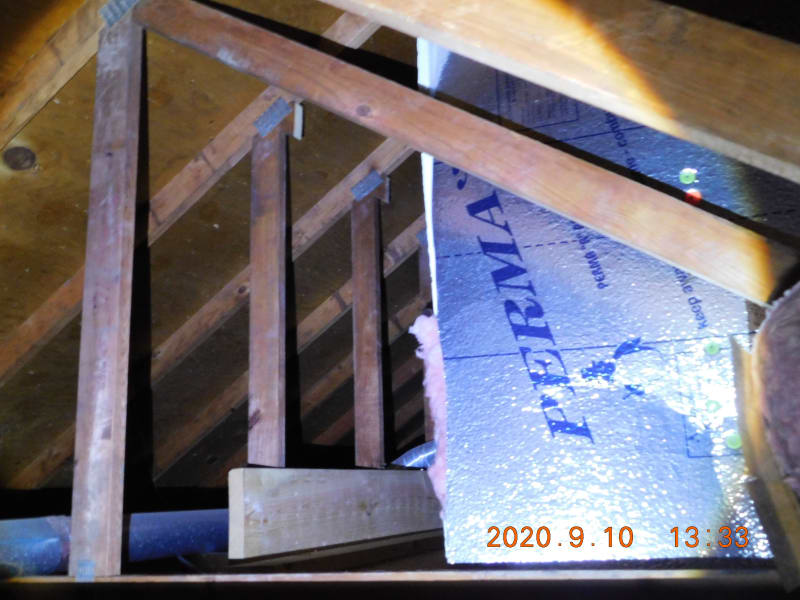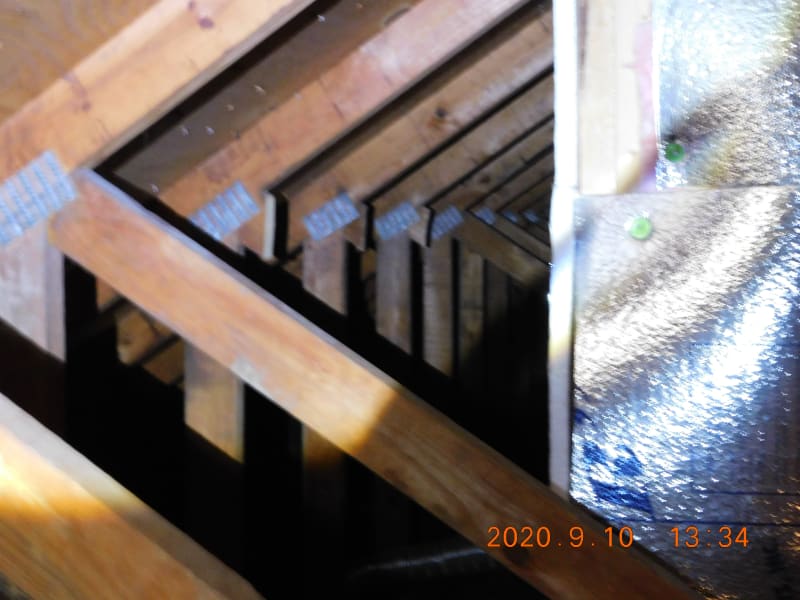Simba13
Structural
- May 19, 2020
- 105


Morning All,
I wanted a second opinion on how to approach repairing some cut roof truss web members. See the attached photos above (I wish I had gotten a few better pictures but you can get the gist), web members of three roof trusses (24" O.C.) were cut to make room for a little alcove in the master bath for a washer-dryer set. We've been asked to design repair modifications for this and other modifications done to the house. I'm not looking for specifics here, more of a high level approach of how to go about fixing this. I've thought about sistering larger members to convert it into a rafter roof in just this region or building a frame around the cut region to distribute the load (somehow...). I'm curious if any of you have seen this before from crazy DIYers and how you approached the design.
Thanks,


![[upsidedown] [upsidedown] [upsidedown]](/data/assets/smilies/upsidedown.gif) As for the lateral component, would I be able to rely on the attachment of the existing trusses to the plywood sheathing for this? since I would be sistering to the existing trusses which should be adequately fastened to the sheathing.
As for the lateral component, would I be able to rely on the attachment of the existing trusses to the plywood sheathing for this? since I would be sistering to the existing trusses which should be adequately fastened to the sheathing. ![[lol] [lol] [lol]](/data/assets/smilies/lol.gif)


